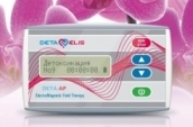Seborrhea - an inflammatory skin disease associated with an increase in the quantity and quality change of sebum. Seborrhea fat is produced not in the sebaceous glands, and is produced in excessive amounts over the body, so the skin constantly moisturized.
Seborrhea is formed on the scalp, face and neck. The pores of the skin while greatly expanding and resemble orange peel. In the formation of seborrhea play an important role genetic predisposition, hormonal disorders of the body, enhanced function of male hormones, the problem state of the gastrointestinal tract, stress, climate.
Distinguish oily seborrhea, which is characterized by coating the hair grease, the presence of reddened areas of the scalp and greasy yellow flakes and dry, at which fat is compacted, thickens and turns a grayish-yellow scales.
Dry seborrhea causes excessive dandruff. Oily and dry seborrhea - two varieties of the same process. Over time, oily seborrhea may become dry. Greasy seborrhea can enhance food containing pork, mutton or goose fat, honey, chocolate, pickles, alcohol.
SEBORRHEIC DERMATITIS - TREATMENT AND SYMPTOMS
| |
Seborrheic Dermatitis is a very common inflammatory condition of the skin. Seborrheic dermatitis is a disease that causes flaking of the skin. It is a skin condition characterized by loose, greasy or dry, white to yellowish scales, with or without associated reddened skin. It usually affects the scalp. In teenagers and adults, it is commonly known as dandruff. |
Cradle Cap is the term used when seborrheic dermatitis affects the scalp of infants, it is usually self-limiting and subsides by the age of six months.
Seborrhea can affect the skin on other parts of the body, such as the face and chest, and the creases of the arms, legs, and groin. Seborrheic dermatitis usually causes the skin to look a little greasy, and scaly or flaky.
How is Seborrheic Dermatitis Caused?
The cause of seborrheic dermatitis is not known to anyone very precisely till yet. The causes may be different for babies and for adults. Seborrheic dermatitis may be related to hormones, because the problem often starts in infancy and goes away before puberty. The most popular theory is that it is caused by a sensitivity to yeast called Pityrosporum ovale on the skin, but it has not been proved yet. It is believed that the build-up of yeast in these glands irritates the skin causing redness and flaking. This organism is normally present on the skin in small numbers, but sometimes its numbers increase, resulting in skin problems.
Seborrheic Dermatitis Prevention
There is no prevention for seborrheic dermatitis, because the cause is still unknown. If you have seborrheic dermatitis, following treatment guidelines discussed above may help prevent a recurrence.
What are the signs and symptoms of Seborrheic Dermatitis?
Seborrheic Dermatitis is a common, chronic inflammatory skin disorder that affects the scalp. It is a condition that mainly occurs in the areas where the oil glands are located i.e. mainly in the middle of the face, behind the ears, and especially on the scalp. However, seborrheic dermatitis may also be found on the eyebrows, eyelids, forehead, ears, chest, armpits, groin, area between the shoulder blades, the part of the face where the beard grows and the skin folds beneath the breasts or between the buttocks. It affects approximately 3% to 5% of the population, most commonly men, and peaks in infancy and middle age.
A dry, flaky scalp is typical in mild cases of seborrheic dermatitis. Severe cases of seborrhea have itching, burning, greasy scales overlying red patches on the scalp. Sometimes the eyes burn or become red. These symptoms may indicate conjunctivitis. The condition is characterized by waxy scale and reddened skin areas. Scales sometimes accumulate at the base of the eyelashes, plugging the follicles and causing them to become red, painful, or swollen (a disorder called seborrheic blepharitis).
Seborrheic Dermatitis Treatment and Cure
Avoidance of tinctures (alcoholic solutions), hair tonics, greasy ointments or soap
Ketoconazole cream may be applied topically once or twice daily
Low potency glucocorticoid creams may be applied topically once or twice daily
Ketoconazole po 200 mg QD for 7 to 14 days
Treatments for seborrheic dermatitis are usually applied directly to the skin in the form of shampoo or lotion. The treatment option you choose for treating seborrheic dermatitis will entirely depend on the patient's age and the location of the body it affects. Treatment can last for several weeks or months and in some severe cases may need to be repeated if the condition occurs again.
Some of the effective treatments of seborrheic dermatitis are discussed below:
A very common and effective treatment for seborrheic dermatitis is to treat the scalp with a shampoo that contains sulfur, zinc pyrithione (like head and shoulders), salicylic acid, tar, ketoconazole (an antifungal drug), or a combination of these substances.
If shampooing is difficult, particularly if the scalp symptoms are severe or if shampooing doesn't help much then you may use a steroid lotion like hydrocortisone (a corticosteroid).
Soapless cleansers may be used for affected skin areas: for example, Aquanil lotion or Cetaphil cleanser.
If seborrheic dermatitis leads to conjunctivitis then treatment with eye drops or an eye ointment containing a corticosteroid may be needed.
Rubbing mineral oil on the head of infants with a soft toothbrush, followed by a gentle shampooing will help treating Cradle Cap.
Treatment of seborrhea includes care for problem areas and taking a multivitamin. Effective treatment of diseases of the results obtained with the help of acupuncture and bio-resonance therapy, based on which device works «DETA». Using these techniques, you can restore the correct operation of the sebaceous glands in 5-10 days.



